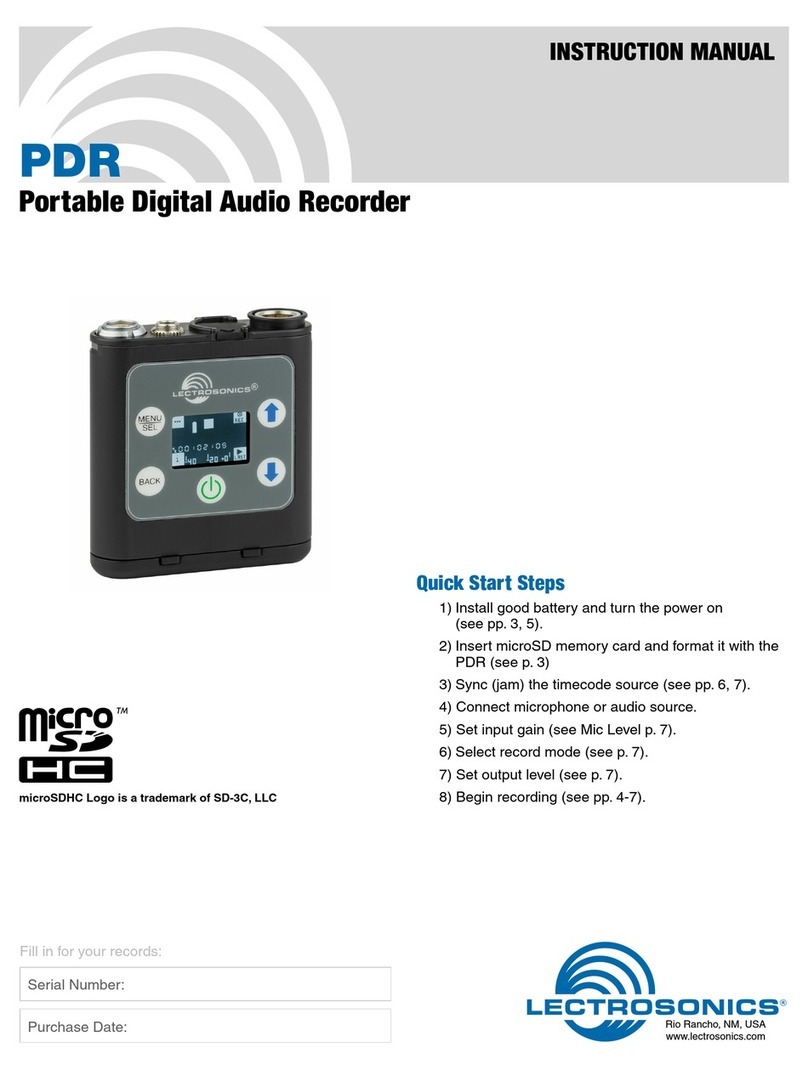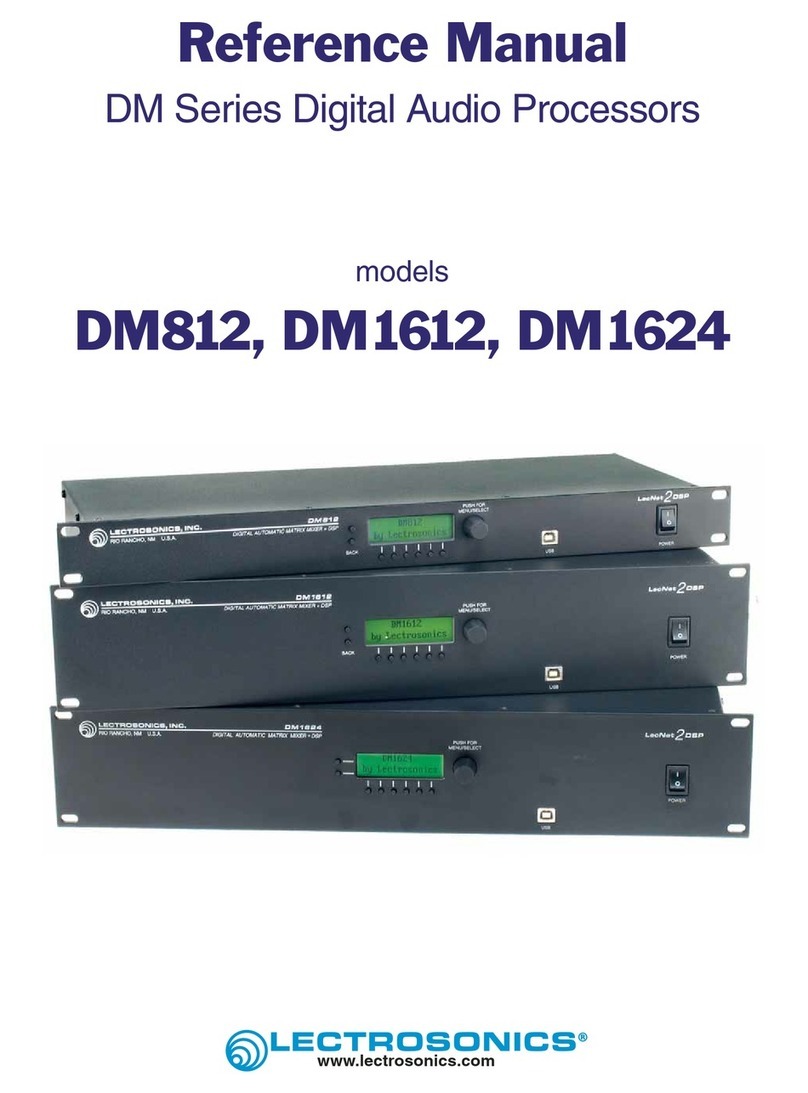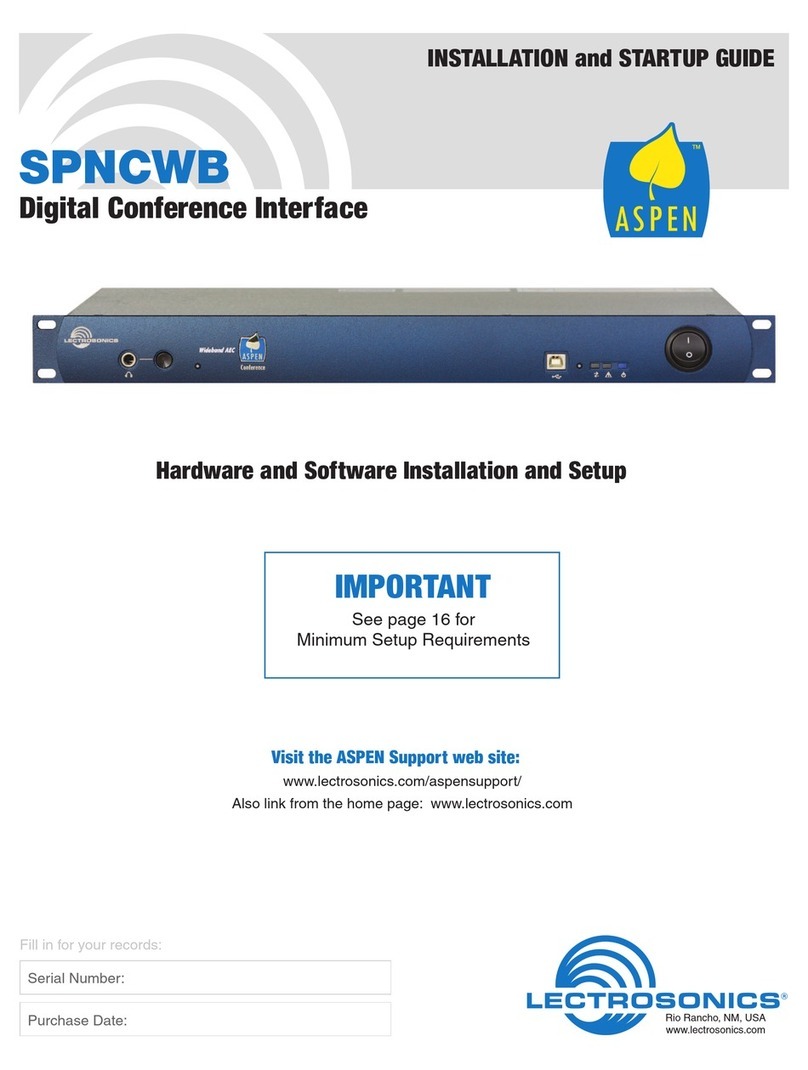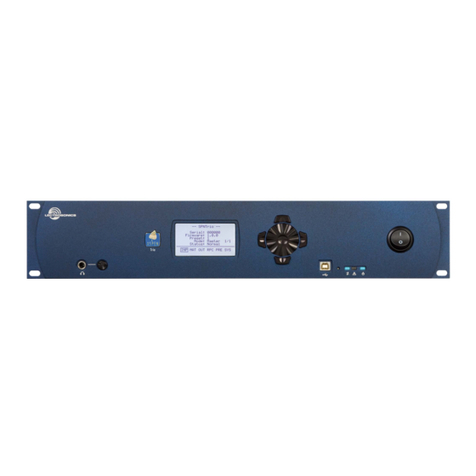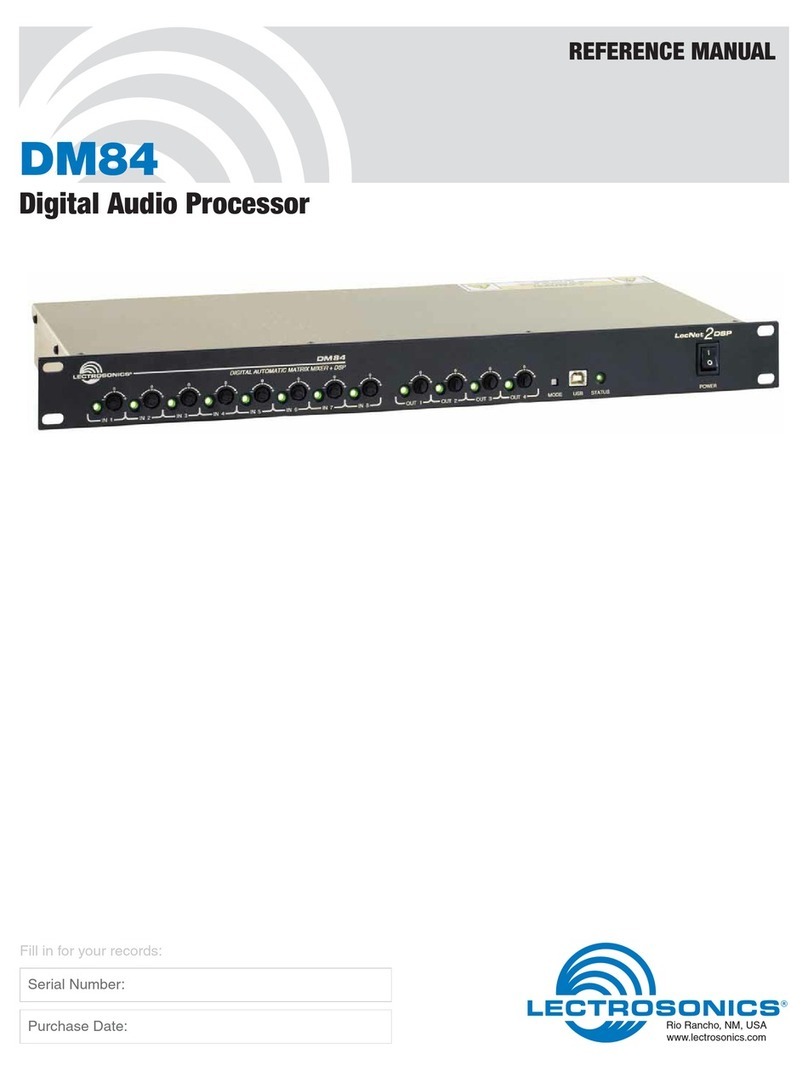
SPNCWB
Wideband Bridging Conference Interface
TECHNICAL DATA
Rio Rancho, NM, USA
www.lectrosonics.com
• Quad-referenceWidebandAcousticEcho
Cancellersupporting3-wayBridging
• Twomaximumspeedgrade,4thgeneration
SHARC®processors*
•DualCodecinterfaces
• TCP/IPEthernetAddressable
The SPNCWB wideband conference interface makes
telepresence and multi-site bridging simple and effec-
tive in any conference room, with full bandwidth audio
frequency response and a unique Quad-reference AEC.
Each conference connection includes a dedicated AEC
for fast and reliable echo cancellation:
• Telephoneline(POTS)
• Codec1
• Codec2
The fourth AEC is assignable to any final mix in the ma-
trixforpurposessuchasnoisecancellation(whenfeda
signalfromasamplingmicrophone).
The AEC converges very fast and will remain converged
during double-talk and any signal type, including sine
waves, enabled by an advanced DSP algorithm. Cancel-
lation depth increases with even with brief signal peaks
from the far ends.
The AEC in combination with the patented proportional
gainmixingalgorithm(US Patents 5,414,776 and 5,402,500)
provides outstanding audio quality without echo heard at
the far ends. Signals from the far ends of the conference
are routed to the local sound system and to three mixes
that are used as reference signals by the AEC. Audio
fromthelocalmicrophones(whichincludesfarendaudio
deliveredbylocalloudspeakers)isroutedtotheAECvia
another final mix for cancellation of the far end signals.
After processing, the output of the AEC is routed back to
the far ends through the matrix.
Three remote sites can be bridged with a local sound
system for a seamless telepresence or audio conference.
The far end audio signals participate in the same man-
ner as local microphones connected to the mixer.
A full complement of audio signal processing is provided
for all inputs and outputs. In addition, a proprietary NRF
(noisereductionlter)isprovidedoneachinputtosup-
press noise in severe conditions. The NRF employs a
proprietarynoisereductionalgorithmusinga1/3octave
analysis and downward expansion. The amount of noise
reduction applied to the signal at each input is adjustable
from6dBto35dBasneededforthesignalconditions
and individual preferences. The process is very effective,
withalmostnoaudibleartifactsuptoabout18dB.High-
er values are available for very poor conditions where
noise is extremely high and intelligibility is improved at
the expense of artifacts in the audio.
A two channel power amplifier is included for loudspeak-
ers in the local sound system. The power amplifier is
driven by final mix outputs from the matrix and has a full
set of signal processing, including delay, parametric EQ,
compressor and limiter. Class-D amplification with a late
generation component provides exceptional efficiency,
low heat and excellent audio performance. The amplifiers
cannot be damaged by wiring errors or unusual loads.
The processor interconnects with other ASPEN proces-
sorsviathe1Gbpbusbuiltintoallmodels.
* SHARC is a registered trademark of Analog Devices, Inc.
• FullyintegratedwithASPENdigitalmatrix
• AdaptiveProportionalGainAutomatic
MixingattheMatrixCrosspoints
• ThirdOctaveNoiseFilteroneachchannel
• Sigma-deltaclass-Daudiopowerampliers
